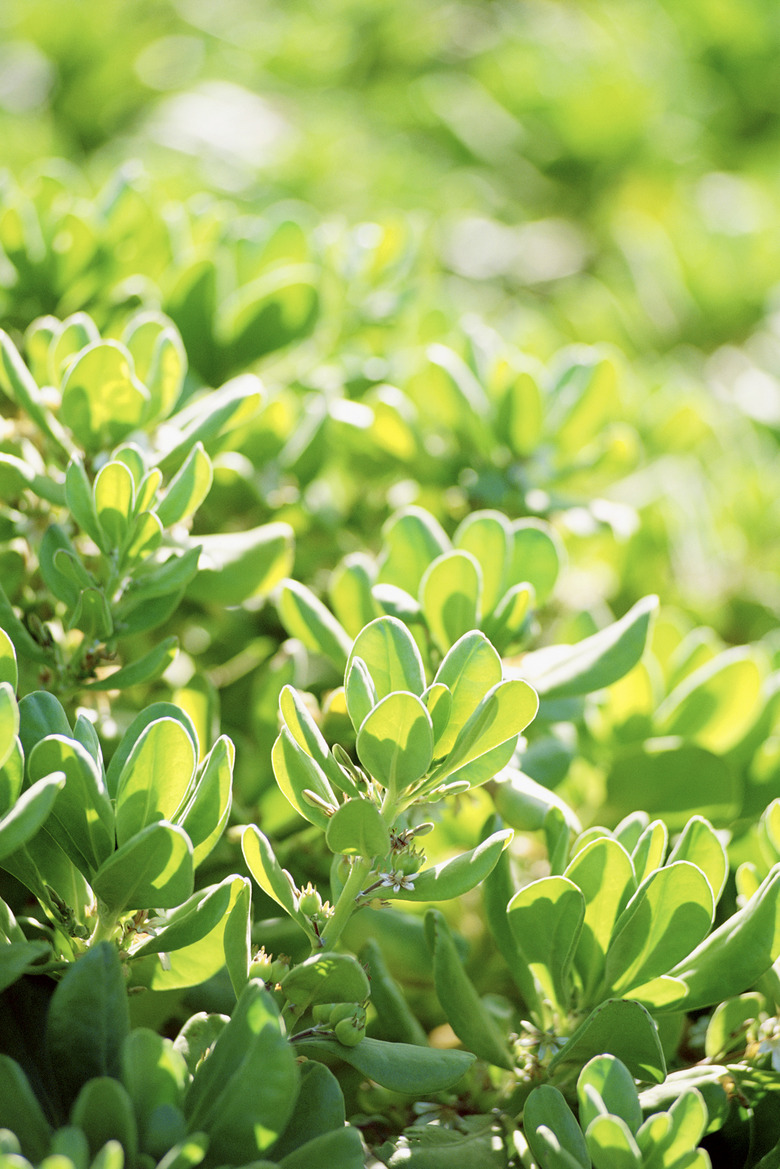What Two Factors Influence A Region's Photosynthetic Productivity?
Unlike nutrients that cycle through ecosystems, energy flows through them. This means that energy must enter the ecosystem at a starting point and it then goes from one organism to another until it is used up and lost completely. Without that initial step that allows energy to flow into the ecosystem, life on Earth would cease to exist as we know it.
What's responsible for allowing energy to first enter the ecosystem? That job lies with **producers**, also known as autotrophs. These organisms are able to create their own chemical energy and most often do this through photosynthesis.
These photosynthetic organisms rely on both access to sunlight and nutrients in order to produce energy. You can measure the productivity and efficiency of photosynthetic organisms. This is called photosynthetic productivity (or primary productivity) and is directly influenced by what producers rely on: sunlight and nutrients.
Energy Flow in Ecosystem
Energy Flow in Ecosystem
Photosynthetic organisms like plants, some bacteria and algae are known as the "gateway" for energy to enter ecosystems. This is because they use environmental carbon dioxide, water and solar energy (aka sunlight) to perform photosynthesis, which converts that solar energy into usable chemical energy in the form of glucose.
Without this step, there would be no way for energy to enter ecosystems for subsequent trophic levels/organisms to access.
What Is Photosynthetic Productivity?
What Is Photosynthetic Productivity?
Photosynthetic productivity, also called primary productivity, is the rate that energy is added to organisms as biomass in producers in an ecosystem (amount of matter that makes up organisms' bodies).
Productivity can be measured for any organism type and trophic level, but photosynthetic productivity specifically measures the rate at which energy is added to the biomass of photosynthetic producers like plants, bacteria and algae.
Two Factors That Influence Photosynthesis and Photosynthetic Productivity
Two Factors That Influence Photosynthesis and Photosynthetic Productivity
The formula and chemical reaction for photosynthesis looks like this:
6H2O (water) + 6CO2 (carbon dioxide) + Sunlight → C6H12O6 (glucose) + 6O2 (oxygen)
Looking at these requirements for photosynthesis, it makes sense that sunlight and nutrient availability are the factors influencing primary productivity in ecosystems since those are the factors required for photosynthesis to occur.
First Factor: Sunlight
First Factor: Sunlight
Sunlight, aka solar energy, is what drives photosynthesis to occur. In areas where there is little or no direct sunlight, the overall photosynthetic productivity is going to be lower since there is less energy to drive that reaction.
This is why most photosynthetic life in aquatic ecosystems is only on surface levels of the water (from the surface down to 656 feet below) since light cannot really penetrate any deeper than that.
This is also why photosynthetic productivity is higher in areas closer to the equator (where there is the most direct sunlight) and lowest at the polar regions. This is also why areas with no light whatsoever has a primary productivity rate of zero since no photosynthesis can take place.
For example, a tropical rainforest has one of the highest primary productivity rates because of its close proximity to the equator. A temperate grassland in the U.S. would have a lower productivity than the tropical rainforest on the equator because of a lower amount of available sunlight at that latitude.
Second Factor: Nutrients
Second Factor: Nutrients
Nutrient availability is the second factor that influences a region's photosynthetic productivity. Besides access to water and carbon dioxide, photosynthetic organisms need nutrients in order for their cells and chloroplasts to function and perform the metabolic reaction.
Scientists have found that magnesium, iron, sulfur, phosphorus and nitrogenous compounds are all _limiting factors_ for photosynthetic productivity.
What this means is that these factors and nutrients can limit how productive photosynthesis is even if sunlight is in excess. For example, open ocean waters receive large amounts of direct sunlight. But because these waters have such little life and access to nutrients, the photosynthetic productivity is very low.
Nutrient levels are influenced by a number of other factors, including:
- Rainfall
- Soil type
- Organisms in an ecosystem
- Decomposers
- Nitrogen-fixing bacteria
- Natural events (volcanic eruption, fires, natural disasters, etc)
- Ocean and/or wind currents
- Climate
- Geographical location
References
- Britannica: Energy Efficiency of Photosynthesis
- University of Michigan: The Flow of Energy: Primary Production to Higher Trophic Levels
- Simeon Career Academy: Chapter 15 Ocean Water and Ocean Life
- NC State University: How Does Energy Flow Through Ecosystems?
- Pearson The Biology Place: Primary Productivity
- Smithsonian: With Every Breath You Take, Thank the Ocean
Cite This Article
MLA
Walsh, Elliot. "What Two Factors Influence A Region's Photosynthetic Productivity?" sciencing.com, https://www.sciencing.com/two-factors-influence-regions-photosynthetic-productivity-12327517/. 9 July 2019.
APA
Walsh, Elliot. (2019, July 9). What Two Factors Influence A Region's Photosynthetic Productivity?. sciencing.com. Retrieved from https://www.sciencing.com/two-factors-influence-regions-photosynthetic-productivity-12327517/
Chicago
Walsh, Elliot. What Two Factors Influence A Region's Photosynthetic Productivity? last modified August 30, 2022. https://www.sciencing.com/two-factors-influence-regions-photosynthetic-productivity-12327517/
